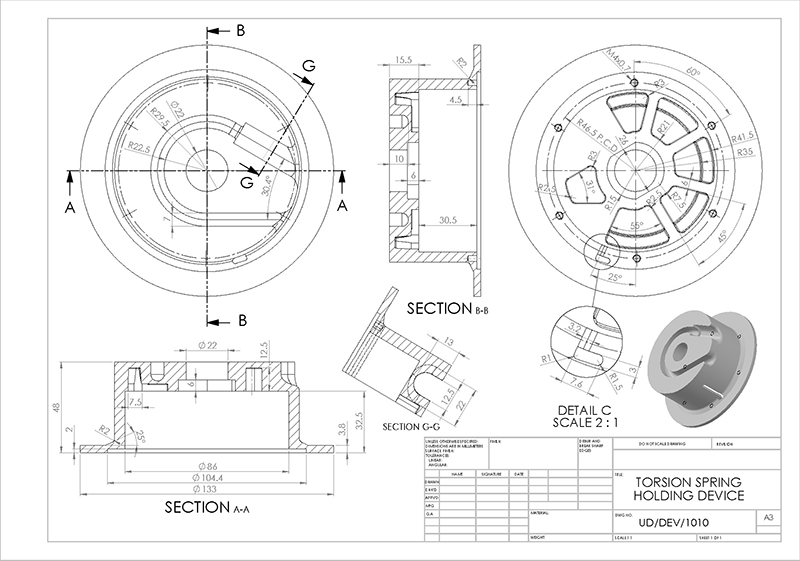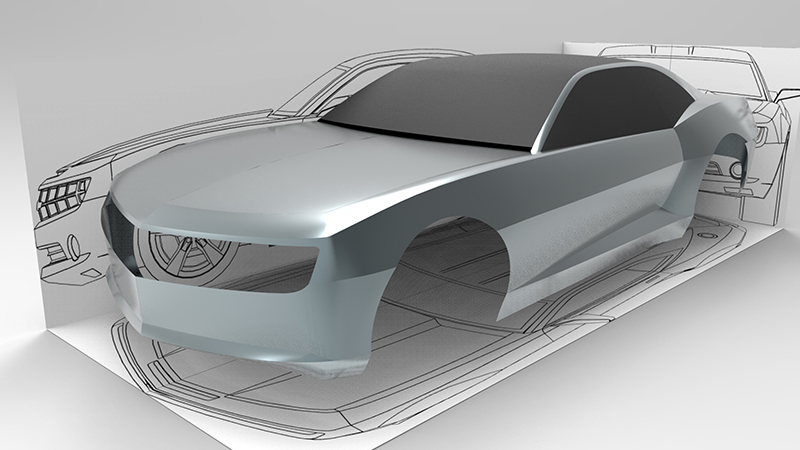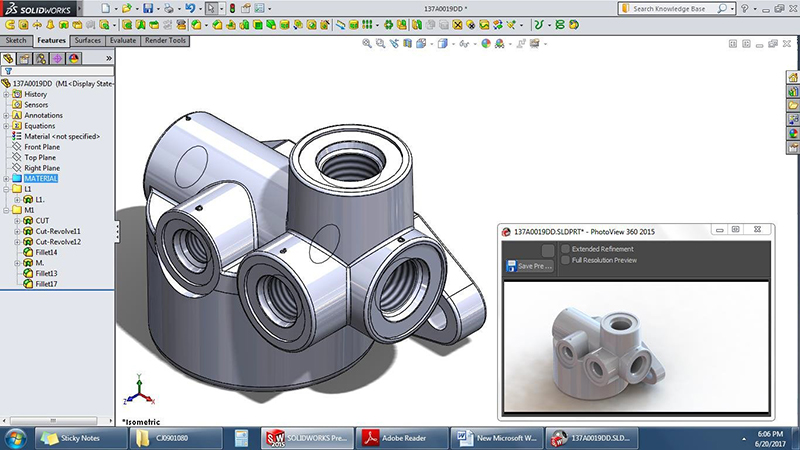When receiving instructions from a customer, it sometimes seems like they think product designers are gods. Not only do you need to get a new product fully developed, but often, unreasonable demands are added on through the testing period without a reasonable amount of time added to go with it.
Deadlines are a big part of product development services and can make or break a product. Too little product development time can lead to expensive delays or poor product quality. On the flip side, asking for too much time can be a delay in and of itself.
Sometimes, asking for more time isn’t possible and you are forced to work within a very tight schedule to get a product completed. If this is the case, how you handle a tight new product development deadline can make all the difference in the quality of your product.
Working on a tight deadline isn’t impossible. Here are a few things you can do to help get done in a timely manner.
Tips to Handle Tight New Product Development Deadlines
1. Care about your deadlines

Unfortunately, it’s very common in the product development world for delays to be considered inevitable. Part of this is the nature of new product design itself. There’s no real way to tell how long it will take you to solve the problem your customer has asked you to and shape that solution into an attractive and usable product.
You can give your customer a rough estimate of how long it might take, but in the end, it is still guesswork. That doesn’t mean, of course, that you should throw a number out there and not care about whether you meet it or not. If you don’t care about your deadline, you are paving the way to consistent lateness your customers will hate.
When you set a deadline, do everything in your power to meet it. Your customers will appreciate it if you are able to meet your deadlines consistently, and that when you are late, it is due to unforeseen circumstances or for reasons you can clearly explain.
If you don’t care about meeting your deadlines, it’ll be that much harder to get your work done correctly and on time, so make this your priority.
2. Be as clear as possible

When deadlines are tight, there is no room for misunderstandings. When speaking with your customer, ask as many questions you need to ensure that you are visualizing their product correctly. In order to work as quickly as possible, there must be no uncertainties as to what sort of problem you are trying to solve, who your customer is, or what the product should look like.
Communication is critical here to avoid time-consuming mistakes. The more problems you can resolve in advance, the faster you can achieve a consistent workflow, and the fewer times you will have to go back to correct mistakes.
Often, customers are not good at communicating what they want in a product. They might say they want a coffee cup that keeps coffee warm while forgetting that they also want it to look modern, fit in a cup holder, or have additional features.
Meeting with a customer before the product design service begins the design phase can give you a chance to go over as many questions as possible so that when you are prepared to create the product they have asked for, you are sure it is the one they actually want.
If the deadline is too pressing, meeting with the customer can also help you work with them to create a more realistic deadline. Sometimes the customer is merely unaware of the fact that their request is unrealistic. They may actually be grateful to learn that a too-tight plan will result in the potential for a lower quality product, or some essential areas being skimmed over.
When given a choice between a tight deadline or a better quality product, giving them the chance to understand what poor quality work might mean for their business can make planning the project easier. At least, if they understand that a tight deadline could also mean a lower quality product should a disaster happen, they will be prepared.
3. Build in a cushion for delays

If a customer asks you how long it will take to complete a project, telling them how long it will take if nothing goes wrong is not the best plan. Even if there’s no reason to believe something will happen to delay the project, the truth is things come up all the time. There are changes in the scope of work, changes to the behavior of people, natural disasters, and even people critical to the job quitting without notice.
Planning for the fact that at some point during the project a delay will hold you up can make it easier for everyone involved. If it’s already too late to change the deadline, skip this step, but if your customer is asking you how long it will take, building in a cushion for the delays you know will probably come up is important.
At best, you won’t need them and you will be able to turn your work in early. At worst, the cushion will make any delays on the project reduced, and give you more flexibility in handling roadblocks along the way.
If you didn’t put in a cushion, or you have already used up your cushion and are still hoping to bring the product together on time, there are still plenty of ways you can get the product and concept design services finished on time.
4. Break the project up into manageable steps

When a project is vast in size, or you have to go through quickly, a large project can paralyze you with the sheer amount of work to be done. Breaking the task up into small, manageable pieces can help make the project go quicker.
As a product designer, you probably already have a program you use to plot out your projects. There are many popular programs available for product designers to help them keep track of their project, where they are at with it, and what they need to do next.
Unfortunately, sometimes these programs can also end up slowing you down. If you’re in a hurry, don’t be afraid to use whatever is quickest to plot out your project quickly. Even a whiteboard can be a practical method of outlining the project and what needs to be done next in a pinch.
Outlining the project is also a great way to reveal potential problems with the product. If you notice a potential problem as you are outlining the steps, it will save you time to work it out now, before any physical products are made, rather than later when it will be too late to avoid expensive delays.
Among all the other steps, this may be the most important one. Breaking up steps into smaller pieces is how almost everything necessary can be done. No one has ever gotten off the couch and climbed Mount Everest in one day. They got there by breaking up that goal into much smaller steps, such as getting off the couch and heading to a gym and learning on shorter hikes first.
Nearly every truly fantastic feat we have witnessed is the result of tiny steps toward a much larger goal. The smaller you make each step, the easier it will be to complete, and the more confident you will be in your success.
5. Keep an eye on metrics

It’s crucial to analyze new data as soon as it comes in and to stay on top of change. Change is part of product design, but if your customer keeps adding new things they want to do little by little, you may not realize just how much more work is expected until it is too late.
Keep track of changes and let the customer know if the ten little changes they’d like made will impact how long it will take for the product to become available.
Add-ons aren’t the only metrics you should be keeping an eye on. Keeping track of how much time each small task is taking will help you, the invention design help, understand whether you are on schedule or not. If one task takes too long, you can make small changes to other parts of your work to keep things on track.
This is part of why outlining your product into small steps is so important. By having each task broken up into mini-tasks, delays can be handled when the problem is at the level of one or two days, rather than one or two months. When looked at overall, it can mean a much faster and smoother workflow for the entire project.
Ballooning finances can also cause problems for a potential product. If your metrics are organized, you should be able to figure out exactly how much each phase of the product design will cost, and make sure that each micro-task isn’t going over budget.
Once again, it’s much easier to make small changes financially here and there, then figuring out what to do with huge deficits once things have piled up. It’s easier to fix a $500 mistake than a $5,000 one, and certainly easier to fix these more than a million-dollar mistake. Keeping a close eye on the small problems, so they don’t become big ones can save a lot of money for both you and your customer later down the road.
6. Keep your team updated

For all of your team to be at their most productive, you need to have daily meetings to keep tabs on where everyone is at. It may be annoying for some who know what to do for the next few days to feel held back by another ‘pointless’ meeting, but for those working on the advertising side of things, or other aspects, knowing what everyone else is doing can speed them up.
These meetings need not be hours long or formal in any way. Have everyone gather for a few minutes to list what they did before, what they plan to do today, and whether or not there are any difficulties that may slow the project down.
If someone is suffering a potential roadblock, it will be easier for the team to support that person when they know immediately, rather than days before the deadline.
While a somewhat overlooked part of dealing with tight deadlines, learning to ask for help is also an essential part of getting a project done on time. If your team members think they need to handle their list by themselves all of the time, it can lead to much more significant delays than necessary. It can also cause too much stress on certain individuals as they struggle to complete their part of the task.
Make sure your team is comfortable with letting you know if they’re behind and be careful not to criticize them when they do mention needing help. Even if the criticism is deserved, being openly critical in front of the team will discourage others from mentioning their need to help, potentially slowing the whole project down.
7. Keep close track of the development plan

The development plan isn’t just something to show your customers. It’s also a detailed roadmap to help you get through the development process. If you file it away once the project begins, you’re not only wasting the time that you put into making it; you’re giving up the outline designed to help you get through the product faster.
Make your development plans the center of your team by posting it in visible locations for your team to reference whenever necessary. It can be your go-to for meetings, a quick reference to see how much you have left to complete, and a way to guide you on the next step if you get ahead.
When your team can look and see where everyone else is without having to find that person and ask, it can help smooth the process out. It’s much easier for your team to be able to plan for the future on a certain project when they can see as much as possible for themselves.
Cloud software can be helpful in this situation too. There are products available that allow everyone to see what others are doing, and also keep their copy of the plans automatically updated when someone makes a change. This is a great way to keep things moving as quickly as possible, providing everyone on the team is familiar with it.
8. Be realistic about the plan

When setting tasks for individual people, it isn’t always easy to judge how much work is too much. You may think the list you’ve set for each person is reasonable, when in fact the list will force them to cut corners or not finish at all to complete it.
When planning how much each team member can handle, try to be realistic about your expectations. If they finish early, you can always have them support another team member who is struggling, but if everybody is struggling to get things done, you won’t have any wiggle room to make changes.
9. Prepare for changes of scope
Nearly every project has one thing in common—sooner or later, the customer will want to change something. Scope of work changes are a normal part of product design. Unfortunately, they can also make your job getting a project done on a tight deadline done very difficult.
When you’re given a scope of work change, your first job should be to analyze the scope of work and see if it is even possible. You should never agree to a timeline that you have no hope of fulfilling. Either the quality of your work will drop to meet the new demands, or you will surprise and disappoint your customer with a potentially expensive delay.
If you have no hope of following the changes in scope, speak with the customer and make them aware that there will be delays for these changes. If they agree you can give them a realistic timeline, and if not, they will at least not be surprised when it happens.
Sometimes, the scope of work can be to your benefit. If they decide not to add a feature you haven’t worked on yet, it can make it easier to get your work done in the time allotted to you.
Hopelessly Behind? Here’s What To Do

Even the best-laid plans can end up going wrong. We already discussed a change of work order, but sometimes other things come up that can’t be avoided. A natural disaster may have wiped out your servers, a virus destroyed your work, or there are issues within the team causing problems.
Even a great manager will struggle when problems beyond their control come up. Just as with a scope of work change, it’s best to let your customer know as soon as you can if a deadline won’t be met. Here are a few things you should also do.
- Don’t panic
Some people handle looming deadlines well. Others, not so much. If you know you’re not going to make it and are stressing about what the customer will think, what to do, and how best to dig your way out of the situation.
When you’re already working late at night and burning the candle at both ends to make it work, seeing that you still won’t get your deadline done on time can be a cause for panic. Your best bet is to just stay calm and work through the situation as best as you can.
Your best bet will be to reach out to the customer directly and let them know what is going on. - Explain yourself briefly
There’s no need to drone on for hours about what went wrong and why, but a quick explanation as to what happened may be necessary. If you have experienced a natural disaster or other unavoidable circumstance, your customer will most likely be understanding.
Even if it’s not, a brief explanation of what happened will help them get a better idea of whether this is a one-time event or an ongoing issue you need to work through. - Be appreciative of an extension
Even if the reason for the delay was not your fault, it’s good form to express your gratitude for the extension. Let the customer know you appreciate that they gave you the time you needed to do the project right.
You might not be able to help a delay, but if your customer is kind about it, it can make all the difference in the world. - Offer to give them what you have
If the project is large, some of it may be ready to use right away. If the design is done, but the prototypes are delayed, offer to send them the data you have so they can continue forward. If your prototypes are done and testing is still in progress, offer to send them a rapid prototype.
If the customer has something to work with, they may be able to move ahead with their part of the project, giving you more time to catch up. Even if they can’t use it, they’ll appreciate knowing that you have part of the project done, and you weren’t just starting it a day before the deadline.

Deadlines can be difficult to meet, especially when they are overly strict. To help give you the best chance at meeting deadlines, you need to start by caring about them, and giving the customers a clear idea of how much time their work will take and what you are doing.
Tight deadlines don’t have to mean delays, but they do need care and attention to be finished on time.
As a designer, planning ahead is your best course of action in order to handle a tight deadline. Communicate with your customer, and if things go wrong, work together to make things go as smoothly as possible. With the right management, even tight deadlines can be handled in a timely manner, and your customer will be very grateful for the effort.
Cad Crowd’s Product Development Freelancers Can Help
If you are facing a tight deadline and need extra hands to help you tackle everything, Cad Crowd’s freelance product designers can assist you at any time. We have a vast database of experiences and pre-vetted product design freelancers from all over the world. They are willing to sign an NDA and get started right away.
Take a look at how it works or find out how to start a design contest if you’re open to new and innovative design concept ideas.
